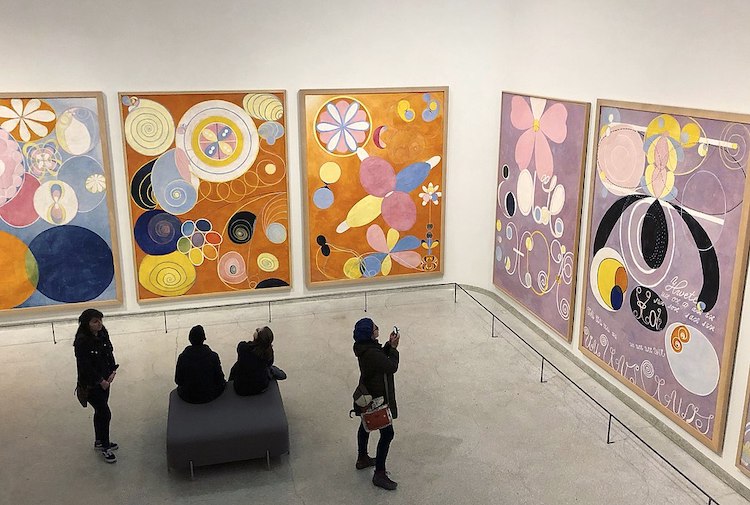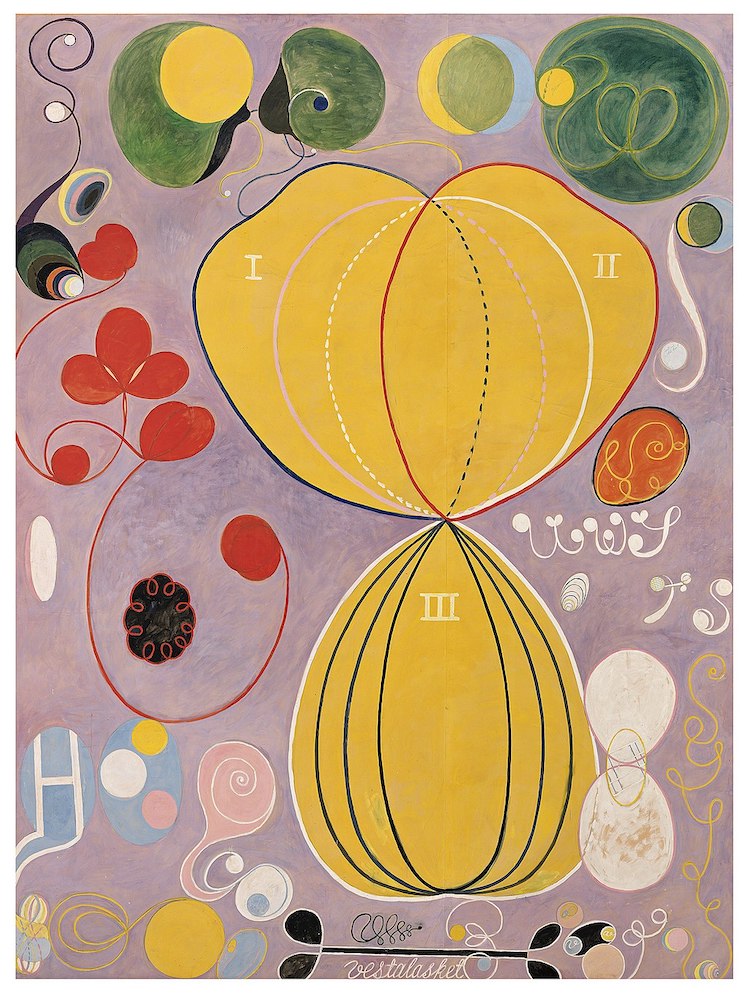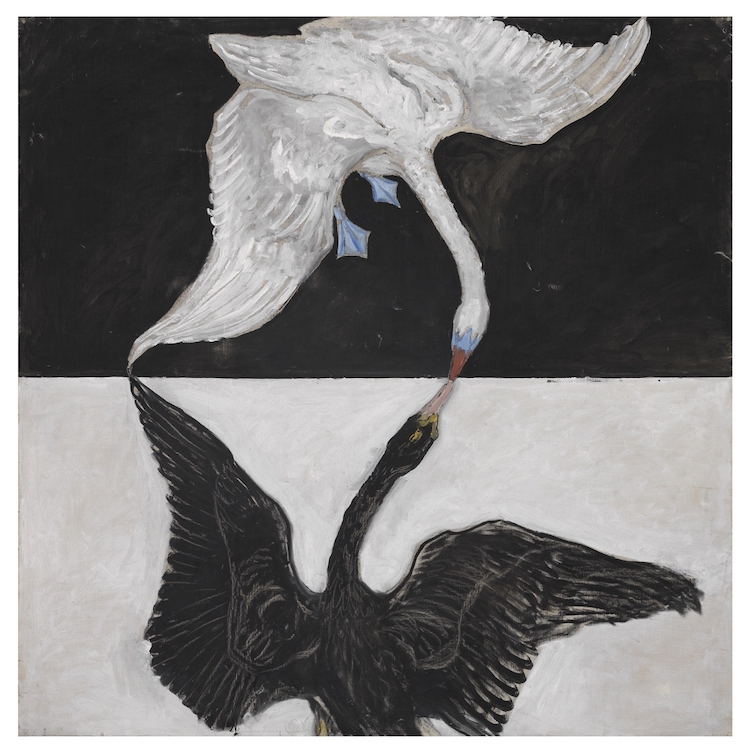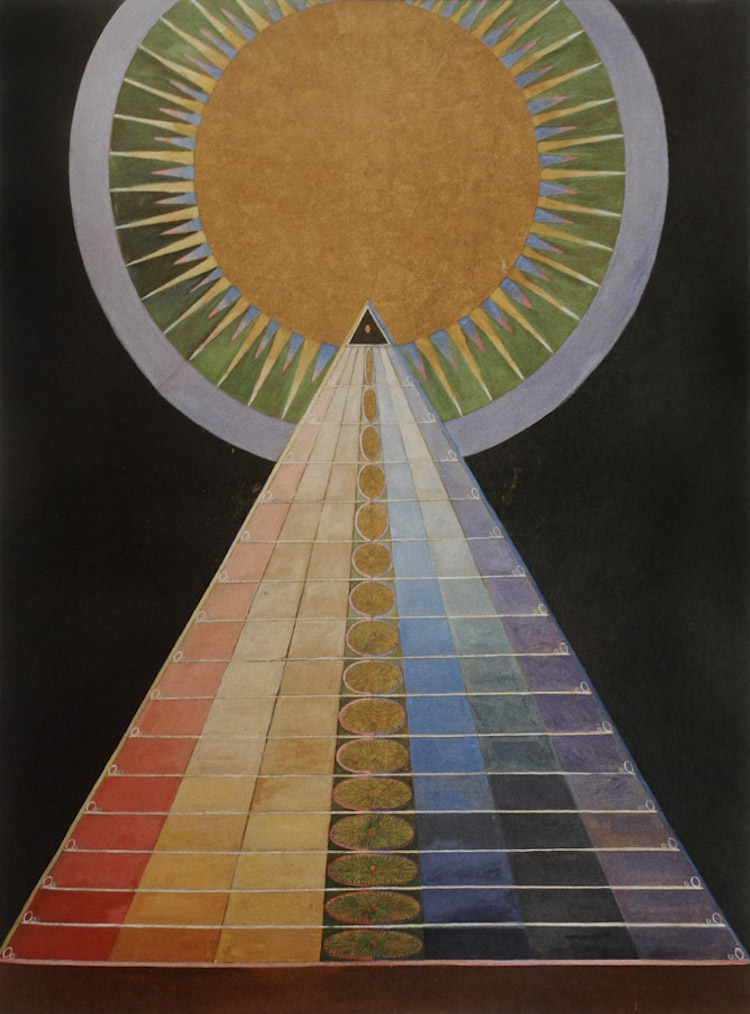5 Abstract Paintings by Hilma af Klint That Capture Her Colorful View on Life

Hilma af Klint exhibition at the Guggenheim Museum, 2018 (Photo: Wikimedia Commons, CC BY 2.0)
Although Wassily Kandinsky and Piet Mondrian are often regarded as the pioneers of European abstract art, it was actually Swedish artist Hilma af Klint who was the first trailblazer of the movement. The radical female painter began creating bold and colorful works in 1906 and continued working during the final years of her life. However, even Af Klint understood that the world wasn’t ready for her work. She rarely exhibited her paintings and asked that her large body of work not be shown for twenty years after her death. Ultimately, her groundbreaking artwork remained unseen until 1986.
Throughout her adult life, Af Klint was part of a religious movement where she practiced a kind of transcendental spiritualism. She believed spirits could communicate with the living and began participating in séances. While making contact with the dead, she took detailed notes and practicing automatic drawing. During one séance in 1906, the artist—who was 43 years old at the time—claimed she received a message from a higher being who requested a “great commission.” Af Klint maintained that she had been asked to make paintings on a transcendent plane, which would one day be hung in a circular temple.
Over the next nine years, Af Klint was consumed by this mission. She completed The Paintings for the Temple, a large series of 193 works that encompasses several smaller themes.
Read on to discover five of Af Klint’s famous paintings, from her early abstract works to her pieces from The Paintings for the Temple series.
Here are five Hilma af Klint paintings and the fascinating meaning behind them.
Primordial Chaos No.7, 1906-07
View this post on Instagram
In 1906, Af Klint began working on her first series of abstract works which she called Primordial Chaos. The series of 26 small canvases illustrate the creation of life and certain dualities the artist was fascinated by. This painting, titled Chaos No.7, depicts the moment sperm meets the egg. Af Klint’s narrative is emphasized by the symbol for “W,” representing man and matter, and “U,” standing for woman and the spiritual. Polarity and union are also represented in color. The artist used blue to represent male, and she used yellow to symbolize female. When the two hues merge, they create a harmonious green, implying that they have spiritually become one.
No. 7, Adulthood, 1907

No. 7, Adulthood, 1907 (Photo: Wikimedia Commons, Public Domain)
No. 7, Adulthood is part of Af Klint’s The Ten Largest series. The collection represents the stages of life, including childhood, youth, maturity, and old age. They combine botanical elements and recognizable organic objects that reference birth and growth. This huge canvas, measuring three meters high and two meters wide, was painted on paper, on the floor of the studio, and then pasted onto a canvas.
Af Klint interprets adulthood in full bloom by painting various free-flowing shapes in different sizes and colors set against a lilac background. The central yellow symbol resembles a flower, while spirals and biomorphic forms are symbols of growth and fertility.
Evolution, No. 12, 1908
View this post on Instagram
The Evolution series, also known as the Seven-Pointed Star series, explores theories of evolution. In 1859, Charles Darwin had just published his groundbreaking book title The Evolution of the Species. While Af Klint was creating her Evolution series, the topic was widely discussed in society, newspapers, and books. The artist explored the subject with a sense of spirituality. Through her paintings, she illustrated the interplay between polarities: male and female; light and darkness; and good and evil.
In Evolution, No. 12, Af Klint references the biblical tale of creation. Adam and Eve are depicted in the scene—Eve in Af Klint's signature female yellow, while Adam is adorned in blue robes. The two figures are being provoked by two large black serpents. This is a reference to the snake in the Garden of Eden that tempted humans to eat the forbidden fruit from the tree of knowledge. The painting also illustrates swimming sperm and a central female egg. This signifies that the man and women are in the process of reproduction.
The Swan, No. 1, 1914-15

The Swan, No. 1, 1914-15 (Photo: Wikimedia Commons, Public Domain)
The Swan, No. 1 depicts two flying swans: one with black feathers and a yellow beak, and another with white plumage and a blue beak and feet. Af Klint references the ancient Chinese symbol of yin and yang, which is highlighted by the contrasting black and white foregrounds. Although the two swans seem to be struggling against each other, they are also complementing and mirroring the other. The two birds are symbols of femininity (the black swan) and masculinity (the white swan).
Af Klint created another painting within the same series titled The Swan No.2. It depicts the same two swans violently thrust together with red blood dripping from the black, female swan’s wing. Together, the two paintings are a narrative of the balance (and often imbalance) between the sexes, as well as other dualities in life, such as good and bad, and peace and war.
Altarpiece, No. 1, 1915

Altarpiece, No. 1, 1915 (Photo: Wikimedia Commons, Public Domain)
For her final works within the Paintings of the Temple umbrella of works, Af Klint produced three large Altarpieces. In Altarpiece no. 1, the artist paints a glowing sun with a “pyramid” below. The triangular structure is divided into rainbow-colored blocks, and a line of golden oval discs features down the center. Each one of the hues has symbolic meaning within the Theosophical and Anthroposophical spiritualist theory. Through this painting, Af Klint illustrates the links between the physical and the spiritual world. Some theorize that it symbolizes the artist’s own journey towards enlightenment and the highest spiritual insight.
Related Articles:
New Documentary Examines Hilma af Klint’s Overlooked Influence as a Female Abstract Artist
9 Abstract Artists Who Changed the Way We Look at Painting
12 Famous Female Painters Every Art Lover Should Know
Alma Thomas: The Life and Work of a 20th-Century Black Female Abstract Artist
READ: 5 Abstract Paintings by Hilma af Klint That Capture Her Colorful View on Life

0 Commentaires